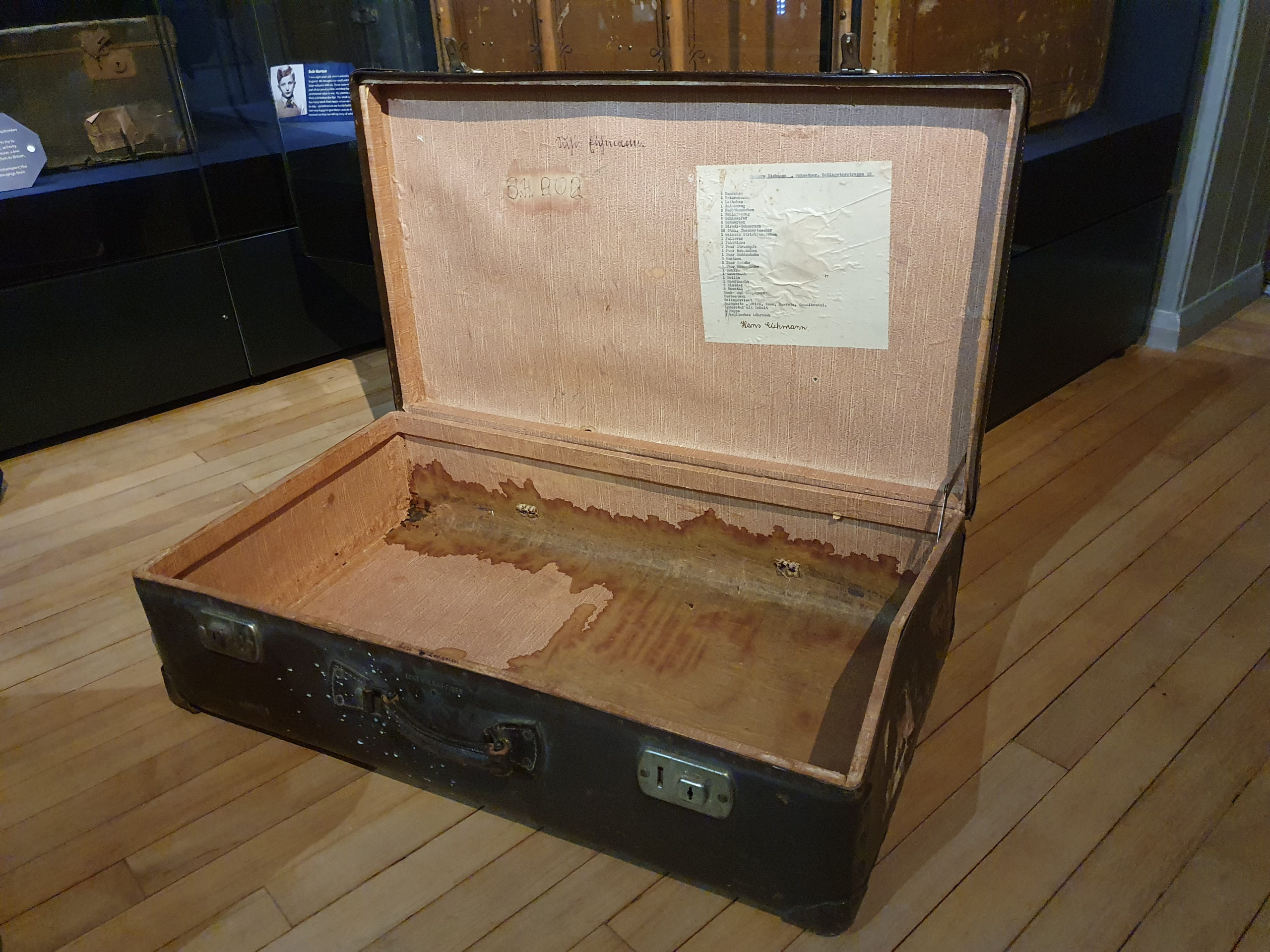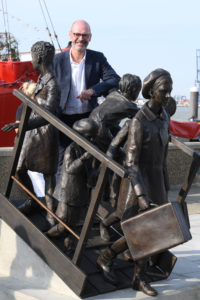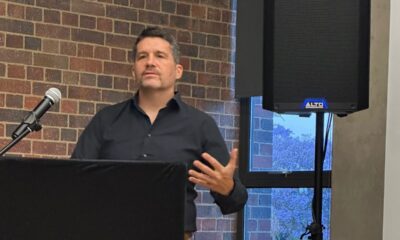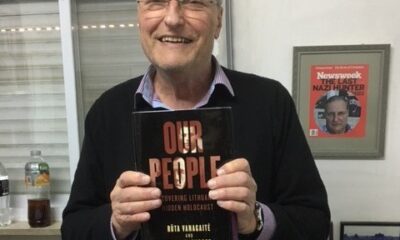
World

Time running out to find Kindertransport rescuers
When Susan Clapper (nee Eichmann) was a little girl, she was sent away from her parents, never to see them again. That journey saved her life, and as an adult, she eventually settled in Durban.
She was one of the children sent on the Kindertransport, the rescue of children from Nazi-controlled territory during the nine months prior to the outbreak of World War II. The United Kingdom (UK) took in nearly 10 000 predominantly Jewish children.
The suitcase that Clapper carried on that journey was miraculously preserved, and is now housed at the Beth Shalom Holocaust Centre in Nottingham, England. On a piece of paper taped to the inside, her parents meticulously listed the items she carried, and her father, Hans, wrote his name – one of the last remaining remnants of a loving parent – killed along with his wife in the Holocaust. Clapper was their only child.
An unknown person or family gave Clapper safe haven, but little is known about the families and individuals who opened their doors to the kinder, as they are known.
Now, a new project has been launched to find the details about these unsung heroes before time runs out. South African expat Janine Wiener Kohan, who lives in the UK, is working with Mike Levy on this project. Levy is the former chairperson of the Harwich Memorial and Educational Trust, the author of Get the Children Out: Unsung Heroes of the Kindertransport, and a researcher with a Holocaust museum in the United States.
“We’re trying to track down and interview the families that took in kinder when they arrived in the UK,” says Kohan. “As many kinder eventually moved to South Africa, we wanted to put out the word that we’re looking for further information about their experiences.”
“This project is to identify and record testimonials of these unsung heroes,” says Levy. “These families played a pivotal role and served to change the course of history for these children. By recording their stories, we can gain a better understanding of the bravery of both the families and children.”
Levy has already traced 25 former foster siblings of kinder, mostly in their 90s. In most cases, they describe the former Jewish kinder as “my sister” or “my brother”.
Clapper’s story epitomises how the Kindertransport saved lives and the roles of the saviours whose names have been lost to history. Born in Germany in 1926, her father’s farm was taken by the Nazis and he was forced to work in a factory before being arrested on Kristallnacht and sent to a concentration camp for 10 weeks. He came home “a different man after that”, according to his daughter’s memories.
Clapper’s parents managed to get her on to the Kindertransport via the Netherlands to England, following the same path that many other kinder took. At the train station, a man told her to “wave goodbye to your father”. It was at that moment that she realised the full implication of what was happening.
This has been captured in a new memorial, in Harwich, Essex, where many of the children stepped off the ship, signifying the start of their new lives but the loss of their parents. The memorial, Safe Haven by Ian Wolter, was unveiled by kinder Dame Stephanie Shirley in September 2022, and shows five children cast in bronze stepping down a gangplank onto safe ground.
“It’s a privilege to create a memorial to such a huge humanitarian effort that is a story of the Holocaust,” Wolter told the SA Jewish Report. “Dame Shirley talked to me about her arrival in Harwich as being a moment of transformation. This was the moment I wanted to capture: when the first child set foot on British soil. The memorial is sited on the quayside where the vast majority of the children landed, so by creating the end of the gangplank, I felt the whole ship could be imagined.”

The children are positioned in different poses. “Typically, children want to stand beside or between sculpted children, and their parents often take photographs. Perhaps parents have sobering thoughts that anyone could become a refugee. So, the memorial is accessible and inviting to children. There are steps at the back so that it’s easy to climb up and stand in the middle of the figures or to one side of the lead character.
“The Kindertransport children must have experienced a storm of emotions,” says Wolter. “In sculpture, one can render only one emotion, so I gave each child a different one. The girl at the front is striding forward confidently. Behind her, another girl of a similar age is peeping around her timidly or curiously. She’s holding hands with a small child who’s nervously nibbling her identification label, displaying anxiety. At the back, a boy is looking back up the gangplank to where they’ve come from. This is a small signifier of what they’ve left behind. The fifth child, a small boy, is climbing on the handrail, lost in his own thoughts.”
At the unveiling, “several of the kinder identified with one or other of the figures”, he says. “Many people rest a comforting hand on the shoulder of a child or hold their bronze hand. I hope the memorial will encourage discussion of the Holocaust, contemporary refugees, and the need to treat them with humanity.”
Clapper’s parents believed that they would see their daughter again. In postcards, her mother, Gertrud, wrote, “Yes darling, I’m still losing my hair [possibly from stress]. I guess once we’re in England it will stop [indicating that she hoped to follow her daughter]. My little girl has been to the cinema three times already, that’s so nice! Have you found a friend in Bromwiel already? If you struggle dressing your long hair by yourself, please ask Miss Hayes [assumed to be her rescuer] to help you. Is my little girl helping with housework? Is Miss Hayes’ brother and his wife willing to take dad and mom as a servant-couple? Or do they know somebody who could take us? We want to work just for food and drinks if they took us. We think about you always, sweet dear Susi.”
In 1941, Clapper received a letter from her grandmother informing her that her mother had died at the Ravensbrück concentration camp. She tried to trace her father’s whereabouts at the end of the war, but it would be only in the 1990s that she would learn his fate. He had been murdered in Latvia.
In 1947, Clapper left England to join her aunt who had survived and settled in Zimbabwe. There, she met Max Clapper, her future husband. The couple moved to Durban in 1952, where Max worked as a Hebrew teacher. By 1957, the couple had three children but in 1960, Max passed away.
Susan was left alone to raise her young children, Paul, Michael, and Trudy (named after her mother Gertrud). She felt that it was not natural for children to grow up in this way with no father, aunts, uncles, cousins, or grandparents. She related her battle to relate to her children in their teenage years as a result of having been separated from her own mother at such a young age. But she was a beloved mother, as can be seen from her gravestone. She died in 2001.
“The search for families that took in kinder is a race against time to record their testimonials,” says Kohan. “If you are one of these families that took in a child that arrived on the Kindertransport or know of any families that helped, we would love to hear from you. Please contact Mike Levy at kindertransport4@gmail.com”










